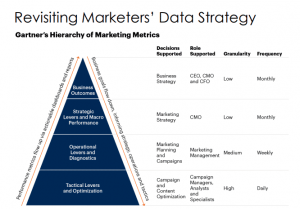According to its 2016 Digital Insights Shopping Predictions, Adobe Systems Incorporated sees online sales increasing to $ 91.6 billion this holiday selling season. This dollar amount represents a massive amount of merchandise that must be constructed, inventoried, sold, and then shipped around the country.
Managing this process is supremely important as some retailers make a majority of their money in just a two-month shopping span. A core part of efficiently handling the holiday shopping season is to ensure the company embraces inventory management best practices. Retailers can’t sell what they don’t have in stock, and they don’t want to be stuck with excess inventory and resort to massive sales in the spring.
Improve Predictions with Analytics
Retailers that want to effectively manage inventory during the holidays should have a keen understanding on what products are currently selling, and which ones are likely to sell during the last weeks of the holiday shopping season. To make such predictions, you need data and powerful analytics tools, and can’t simply rely on gut instinct or for current trends to continue. Armed with information, retailers can make real-time inventory updates to avoid out-of-stocks while improving cash flow.
Streamline Fulfillment
Perfectly managed inventory will all be for naught if your fulfillment processes don’t send packages on time. Customers are exceedingly demanding when it comes to shipment times, and retailers know they must offer free and expedited shipping offers to meet customer expectations.
Some ecommerce shipping platforms can plug directly into inventory management and operations platforms to streamline shipping and processing from multiple channels. Ideally, orders and customer information will be synced together in a single centralized solution so inventory levels can be updated dynamically and customer service can easily apprise customers about shipment delivery.
Introduce Centralization and Automation
Modern retailers typically use multiple sales channels and various marketplaces, whether they are online or offline. Problems arise when a company uses multiple systems to handle each channels’ sales. Different purchase orders, stock numbers, and invoices create an uncontrollable solution where information isn’t properly shared throughout the organization.
Overhaul these disparate systems with inventory management platforms that can sync inventory and track orders, send automatic low-stock alerts, streamline the PO process, and dynamically bundle products as a holidays deal. Integrating various data sources and unconnected processes can be tricky, so consider working with a qualified technology consultancy to help with the structure and flow of the inventory management system.
Sell Excess Inventory Quickly
In some cases, the demand for your predicted best sellers might lag behind, or some of your inventory numbers are off. If you are stuck with excess stock, then you need to carefully judge your particular business. Within some industry verticals you might be able to sell the stock during next year’s season. But for a clothing or electronics firm, for example, it’s likely a better move to sell at a discount instead of presenting out-of-fashion or outdated products.
Manage Cash Flow Intently
As the holiday shopping season kicks into high gear, it’s important to have insights into cash flow. You want real-time access to P&L numbers and sales reports, so you can make adjustments in real time. Armed with cash flow data, companies can better manage inventory and turn it around faster when it comes to restocking.
Managing the inventory supply chain during the holidays is hectic. The key is to know how to use technology tools to make proactive and smarter inventory management decisions, so the season can turn into a record breaker for your company’s sales.
Business & Finance Articles on Business 2 Community
(55)





